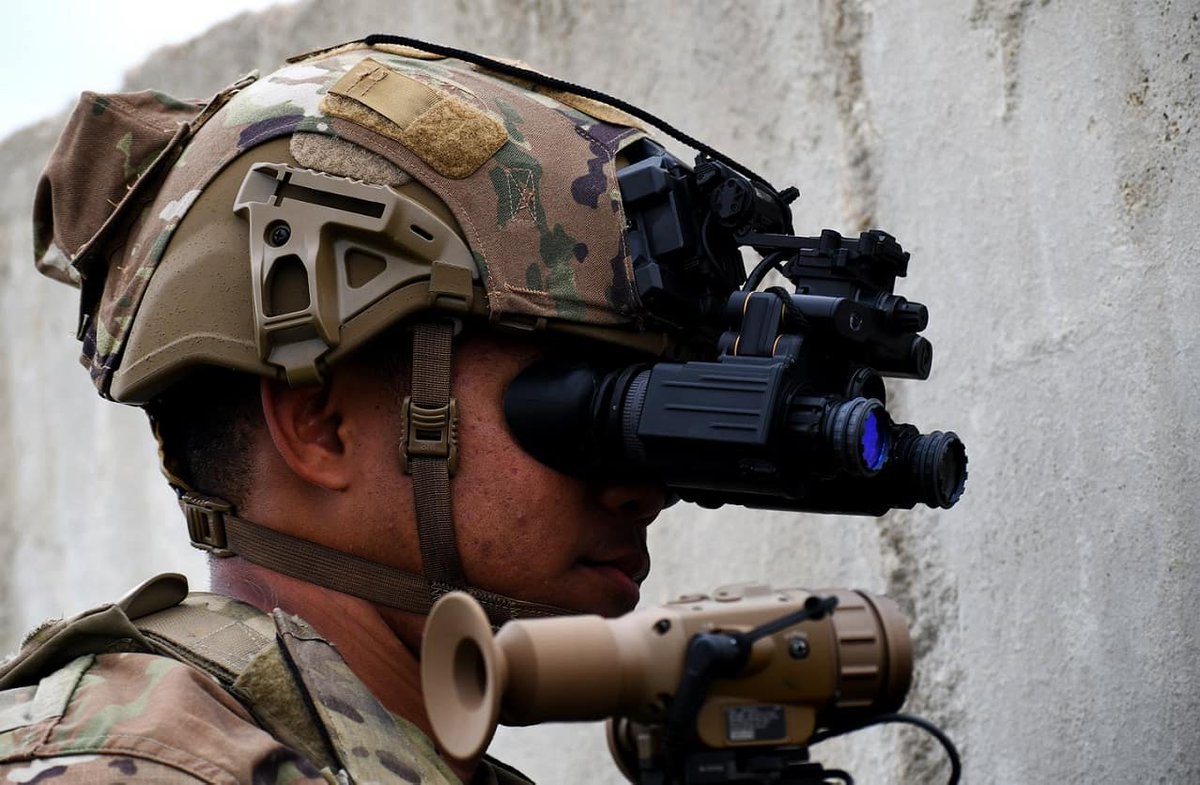As combat becomes more technology-driven, with world powers now integrating state-of-the-art systems to their firefighting prowess, the US Army is all set to enter future battlefields with its all-new ‘combat goggles.’
Microsoft Corp’s high-tech combat goggles are being delivered to the US Army following promising field testing results.
Assistant Secretary for Acquisition Douglas Bush has “cleared the Army to begin accepting” some of the 5,000 sets of goggles, spokesman Jamal Beck said in a statement.
Due to concerns regarding the device’s performance, their delivery had been delayed for want of more rigorous testing. Based on the test results, the service “is adjusting its fielding plan to allow for time to correct deficiencies,” Beck said.
Microsoft Corp has developed the goggles as part of the Integrated Visual Augmentation System (IVAS) designed to improve troop vision in warfare by expanding the field of view, enhancing depth perception, and getting beyond the limitations of human vision.

IVAS has undergone operational testing at Fort Bragg, North Carolina, by the paratroopers of the 82nd Airborne Division of the US Army, Army Technology reported last month. The test was part of the Army’s plan to equip infantry soldiers with mixed reality headsets.
In March 2021, the Army made its initial purchase of 5,000 goggles at $373 million. However, the firm delayed the device’s distribution to continue strengthening the technical platform later last year, putting the first of a potential 121,000 orders on hold.
According to Program Executive Office Soldier, the IVAS may soon incorporate high-resolution digital sensors and tools for continuous situational awareness. This will aid troops with better target acquisition, engagement, decision-making, and sensing.
The US Congress will use the test report to determine whether to approve Army’s request for a $424.2 million program.
Combat Goggles for US Troops
The US Army has created IVAS goggles for close-combat personnel. The new goggles will improve the situational awareness of the infantry personnel, according to a press release earlier published by the Defense Visual Information Distribution Service (DVIDS).
The soldiers can check around corners, see in the dark, and display tactical data such as digital maps on the goggles’ lenses. The new goggles use feeds from Omni directional cameras placed outside the armored vehicles, which is at the heart of how the IVAS goggles operate as a whole, as previously observed by EurAsian Times.
The US Army characterizes the technology as a Heads-Up Display (HUD) system (used by fighter jet pilots) to combine soldiers’ training, combat, and data gathering capabilities.
Commonly referred to as a HUD, the heads-up display is any transparent display that presents data without requiring the pilots to look away from their usual viewpoints.
The IVAS goggle will now directly project important data like films, maps, and night vision into the soldier’s field of view, much like the HUDs do.

According to sources, the IVAS may connect to soldiers’ weapons via a thermal night vision scope fitted on a rifle. As a result, the soldiers can point their guns while hiding behind the cover or use the scope to scan the area for attackers without risking bodily harm from nearby enemies.
According to Dr. Bruce Jette, a former Army acquisition executive who spoke to The National Interest, the technology can reportedly provide soldiers with a three-dimensional perspective they might not otherwise have.
Jette added that IVAS uses the Human-Machine Interface (HMI) to link part of the neurological processes of human vision with software created to aid with depth perception, peripheral vision, and other subtleties related to human vision.
With this kind of improvement, US Army personnel will be better able to map the positions of several targets simultaneously, obtain enemy force location data, and alert the shooter to important attack specifics like the range and location information of the enemy forces.
Rapid targeting acquisitions, infrared and night vision capabilities, navigation headings, mapping, markers, data exchange, and other features are all planned for IVAS. The newly released Enhanced Night Vision Goggle-Binocular weighs the same as the current IVAS prototype, which weighs 2.5 pounds. Over the next ten years, the US Army anticipates spending about $21.9 billion on these glasses.
- Contact the author at sakshi.tiwari9555@gmail.com
- Follow EurAsian Times on Google News




